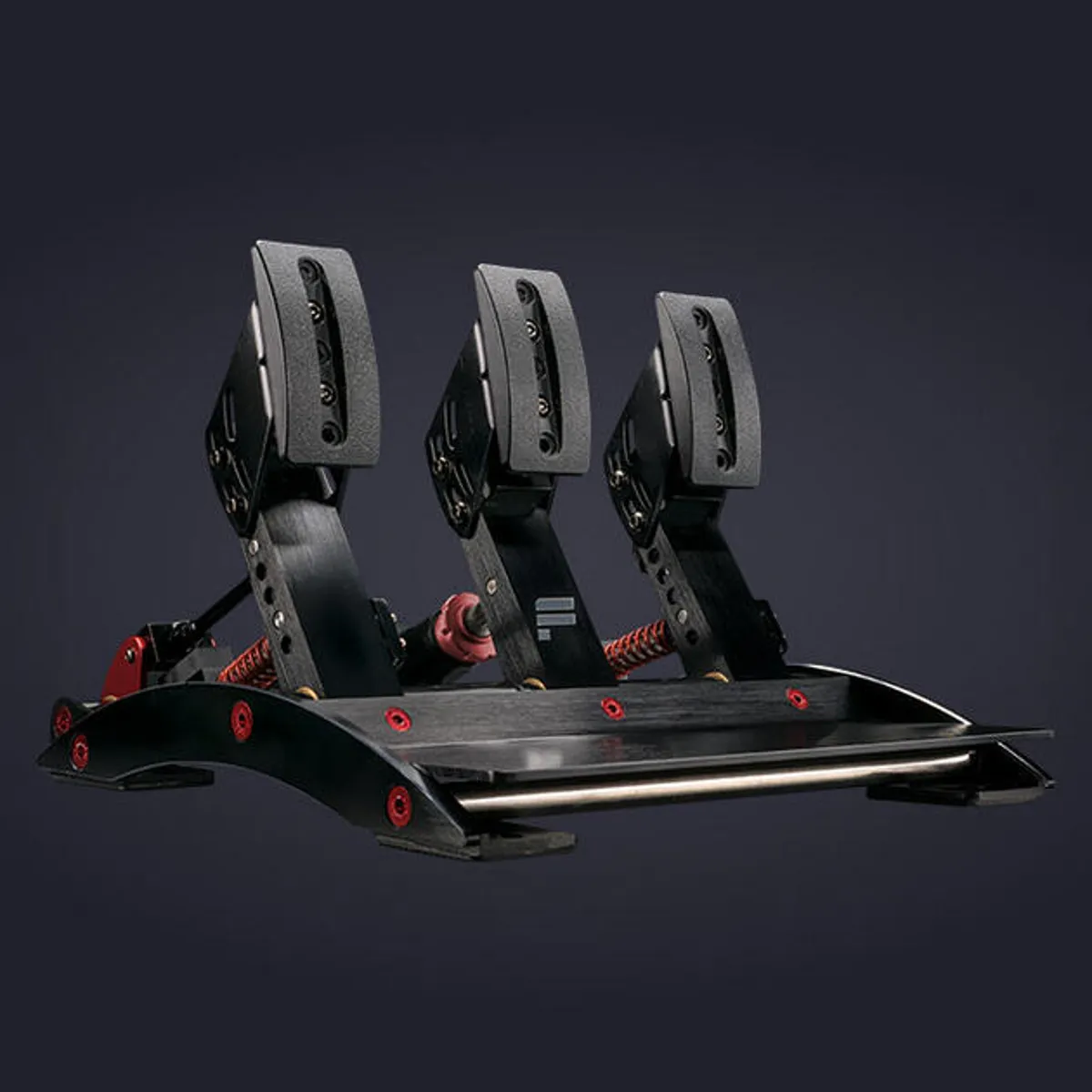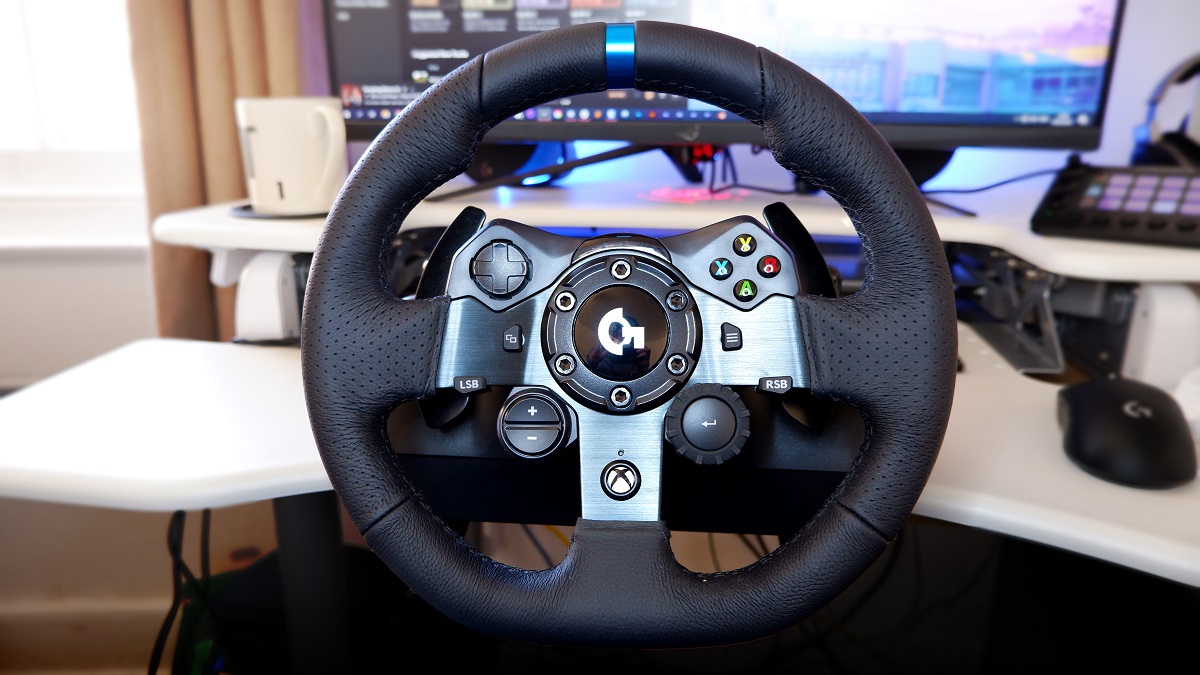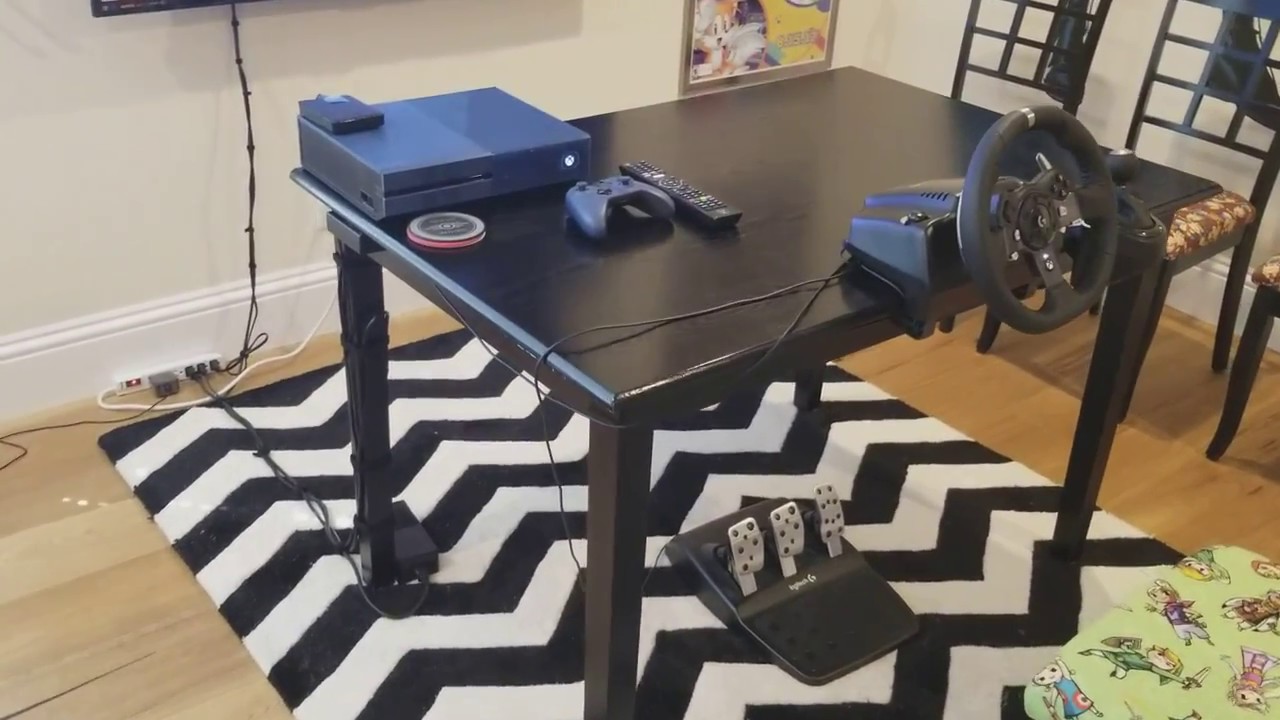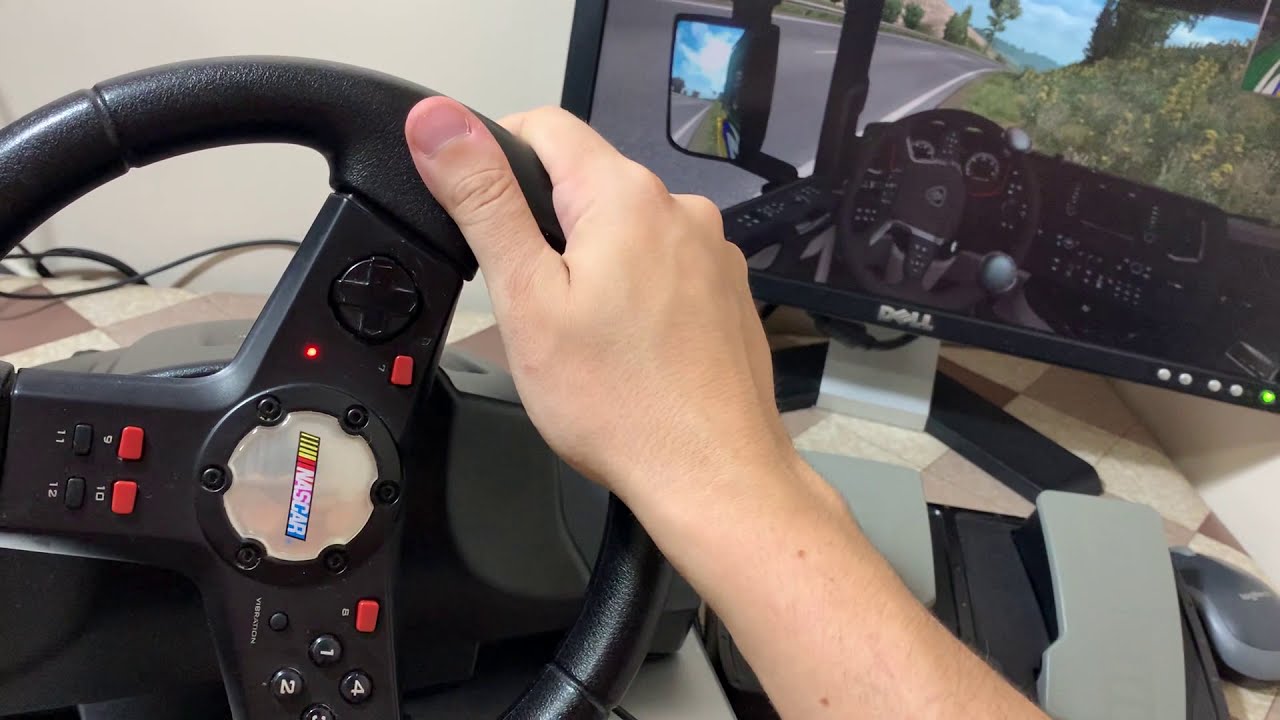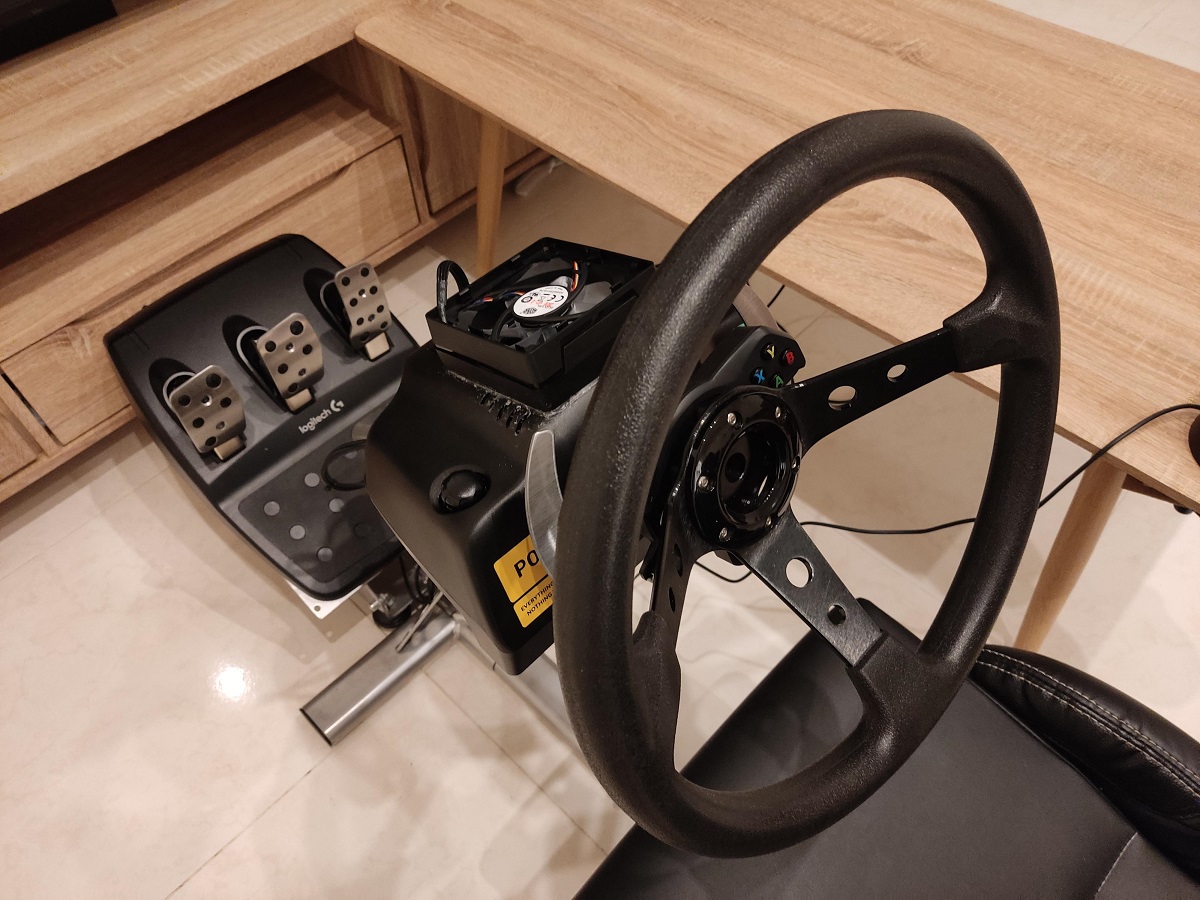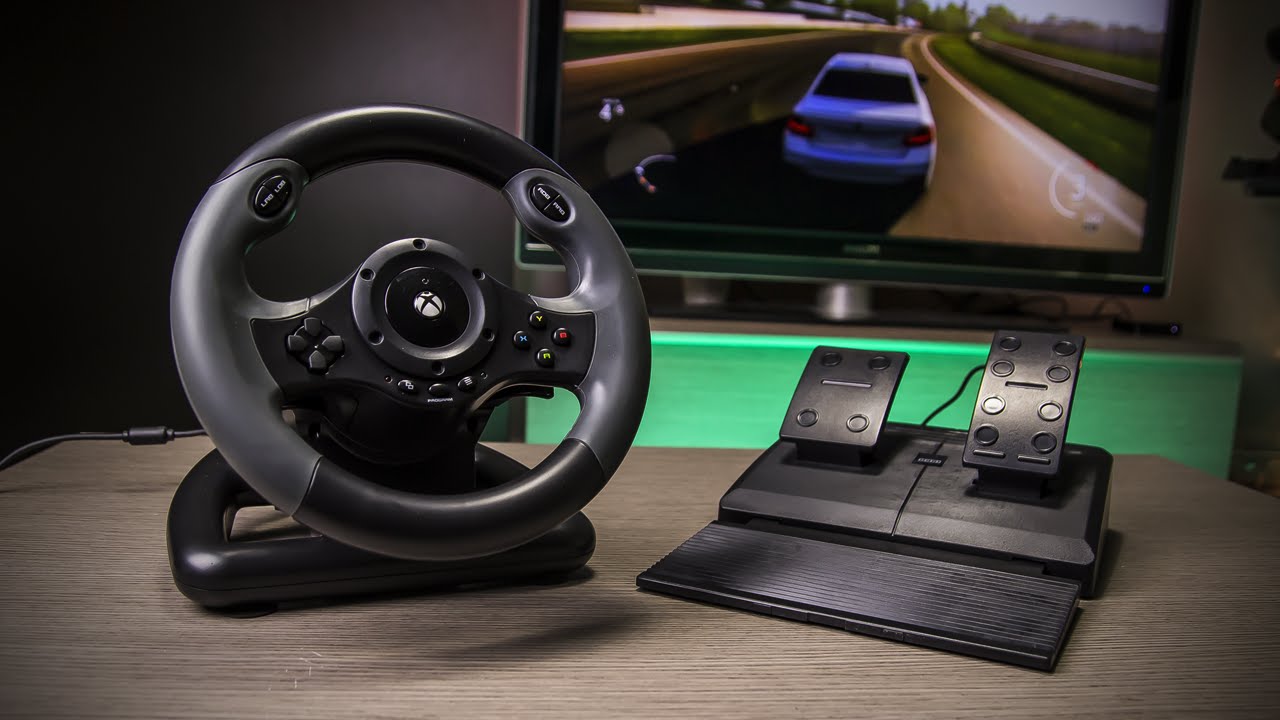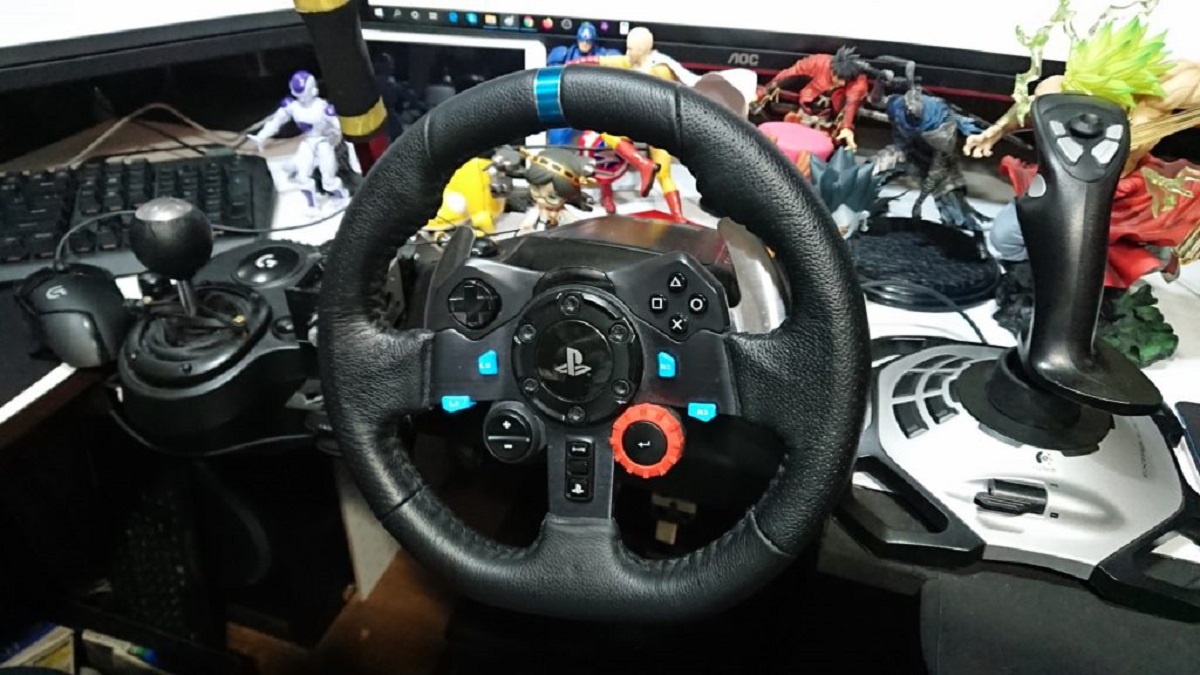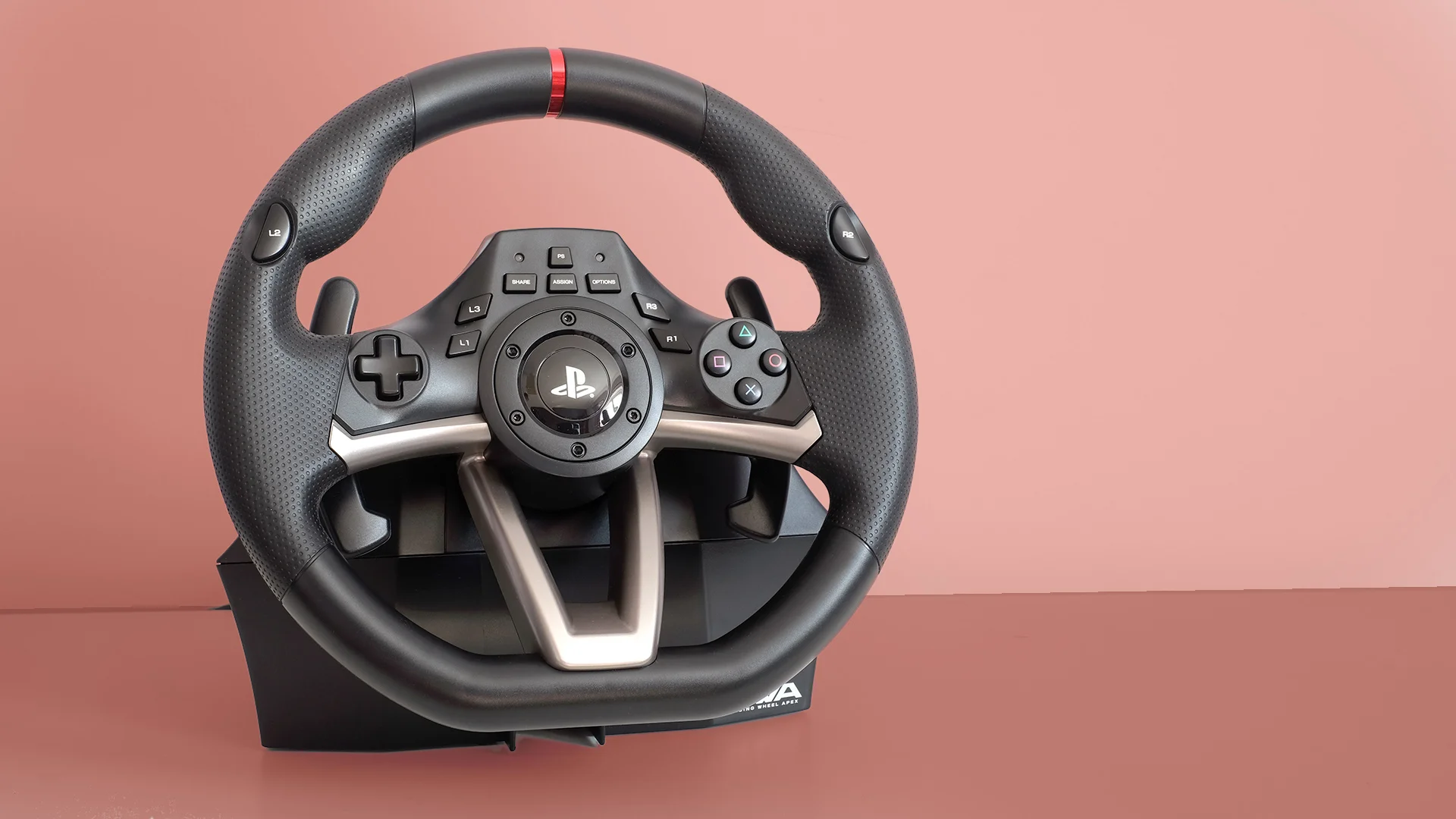Introduction
Racing wheel pedals are a crucial component of any racing simulator setup, as they directly influence the immersive experience and the precision of control. Whether you're a seasoned virtual racer or a newcomer to the world of sim racing, knowing how to effectively test racing wheel pedals is essential for ensuring optimal performance and enjoyment. By conducting thorough tests, you can identify any issues, such as physical damage or responsiveness inconsistencies, and take the necessary steps to address them.
In this guide, we will explore the step-by-step process of testing racing wheel pedals to ensure they are in prime condition for an exhilarating racing experience. From checking for physical damage to calibrating the pedals and evaluating their sensitivity, each aspect of the testing process plays a vital role in guaranteeing a seamless and responsive performance. By following these testing procedures, you can fine-tune your racing wheel pedals to deliver the precision and reliability needed to dominate the virtual racetrack.
Whether you are a casual gamer seeking an immersive racing experience or a dedicated sim racing enthusiast aiming for peak performance, understanding how to test racing wheel pedals is a fundamental skill. Let's delve into the essential techniques for evaluating the condition and functionality of racing wheel pedals, empowering you to optimize your setup and elevate your racing prowess.
Checking for Physical Damage
Before delving into the technical testing procedures, it’s crucial to visually inspect the racing wheel pedals for any signs of physical damage. Over time, pedals can endure wear and tear, potentially leading to structural issues that may impact their performance. Begin by examining the pedals for visible cracks, dents, or irregularities in the construction. Pay close attention to the pedal arms, baseplate, and any connecting components, ensuring that they are intact and free from damage.
Next, inspect the pedal surfaces, including the accelerator, brake, and clutch pedals, for any indications of excessive wear or deformation. Check for worn-out rubber grips, loose pedal pads, or any anomalies that could compromise the pedals’ functionality and comfort. Additionally, assess the pedal springs and hinges for signs of corrosion, stiffness, or misalignment, as these factors can significantly affect the pedals’ responsiveness and overall performance.
It’s also essential to examine the pedal’s electrical wiring and connectors, verifying that they are securely attached and free from fraying or exposed wires. Loose or damaged wiring can lead to connectivity issues and erratic pedal behavior, impacting the overall stability of the racing wheel setup. By meticulously scrutinizing the pedals for physical damage, you can preemptively address any issues that may undermine their functionality and longevity.
Regular maintenance and visual inspections play a pivotal role in preserving the integrity of racing wheel pedals, ensuring that they remain in optimal condition for an immersive and reliable racing experience. By incorporating this preliminary step into the testing process, you can proactively identify and rectify any physical damage, setting the stage for comprehensive performance evaluations and adjustments.
Testing Pedal Responsiveness
Once you have completed the visual inspection for physical damage, the next step in evaluating racing wheel pedals involves testing their responsiveness. This critical assessment focuses on determining the pedals’ ability to accurately translate input commands into in-game actions, directly impacting the precision and control experienced during virtual races.
Begin the responsiveness test by connecting the racing wheel and pedals to the gaming platform or computer, ensuring that all connections are secure and the drivers are up to date. Launch a racing simulator or game that supports pedal input, and access the input settings to monitor the real-time response of the pedals. To gauge the responsiveness of each pedal, apply gradual and deliberate pressure, observing how the in-game indicators or input meters correspond to your actions.
During this testing phase, pay close attention to the linearity and consistency of pedal input. The accelerator, brake, and clutch pedals should exhibit smooth and predictable responses, mirroring the pressure applied in a linear fashion. Any abrupt spikes, delays, or erratic behavior in the pedal input signals may indicate underlying issues that require further investigation and potential recalibration.
Furthermore, assess the pedal travel distance and actuation points, ensuring that they align with your preferred racing style and comfort. Consistent and reliable pedal travel is essential for executing precise maneuvers and achieving optimal braking and acceleration control during intense racing scenarios. By meticulously evaluating the responsiveness of the pedals, you can identify and address any deviations or irregularities that may impede your racing performance.
Testing pedal responsiveness serves as a fundamental aspect of fine-tuning and optimizing the racing wheel setup, allowing you to tailor the pedal behavior to your preferences and racing techniques. By conducting thorough responsiveness tests, you can pinpoint any discrepancies and make informed adjustments to enhance the overall control and immersion offered by the racing wheel pedals.
Calibrating the Pedals
Calibrating the racing wheel pedals is a pivotal step in ensuring precise and consistent input recognition, ultimately enhancing the overall control and performance of the racing simulator setup. Through calibration, you can fine-tune the sensitivity and range of the pedals, aligning them with your individual preferences and racing style. This process is particularly beneficial for addressing minor discrepancies in pedal behavior and optimizing their responsiveness for a more immersive and tailored racing experience.
Commence the calibration process by accessing the racing wheel’s software or configuration settings, where you can typically find dedicated options for pedal calibration. Follow the manufacturer’s guidelines and recommendations for calibrating the pedals, as specific procedures may vary based on the model and compatibility with different gaming platforms.
During the calibration procedure, you will have the opportunity to adjust various parameters, such as pedal dead zones, maximum input range, and sensitivity curves. Fine-tune the settings to achieve a balance between responsiveness and precision, ensuring that the pedals accurately capture and translate your input commands without unintended delays or inaccuracies.
When calibrating the accelerator pedal, focus on establishing a smooth and linear response that mirrors your desired acceleration control. For the brake pedal, aim to set the actuation point and resistance to align with your braking technique, allowing for consistent and reliable deceleration during intense racing scenarios. Additionally, if your racing wheel setup includes a clutch pedal, calibrate it to match the engagement and disengagement points that complement your shifting and clutch control preferences.
After adjusting the calibration settings, conduct thorough testing in a racing simulation environment to evaluate the impact of the calibration adjustments. Assess the pedal behavior and responsiveness, making note of any improvements in input accuracy and overall control. Iteratively refine the calibration settings based on your testing observations, striving to achieve an optimized configuration that enhances the immersive and intuitive nature of the racing wheel pedals.
By meticulously calibrating the pedals, you can tailor their behavior to align with your racing preferences, ultimately elevating the responsiveness and precision of the racing wheel setup. This proactive approach empowers you to fine-tune the pedals’ characteristics, fostering a more personalized and immersive racing experience that caters to your unique driving style and performance expectations.
Testing Pedal Sensitivity
Assessing the sensitivity of racing wheel pedals is a crucial aspect of refining the overall control and responsiveness of the racing simulator setup. By evaluating pedal sensitivity, you can fine-tune the input characteristics to align with your driving style and maneuvering preferences, ultimately enhancing the precision and immersion of virtual racing experiences.
Initiate the sensitivity testing process by accessing the input settings within the racing simulator or game, where you can typically adjust the sensitivity parameters for each pedal. Begin with the accelerator pedal and gradually apply varying levels of pressure to observe the corresponding acceleration response in the game. Assess the linearity and smoothness of acceleration, ensuring that the pedal sensitivity reflects your desired throttle control and responsiveness.
Next, shift the focus to the brake pedal and evaluate its sensitivity in relation to deceleration and braking control. Apply gradual pressure to the brake pedal and monitor the braking response within the simulation environment. Verify that the sensitivity settings facilitate precise and consistent braking maneuvers, allowing for nuanced control over deceleration without sacrificing responsiveness or stability.
If your racing wheel setup includes a clutch pedal, engage in a similar testing process to gauge the sensitivity and responsiveness of clutch engagement and disengagement. Adjust the sensitivity settings to accommodate your shifting technique and clutch control preferences, ensuring that the pedal’s behavior seamlessly integrates with your overall driving dynamics.
Throughout the sensitivity testing phase, it is essential to strike a balance between responsiveness and control, tailoring the pedal sensitivity to complement your racing style while maintaining stability and predictability. Fine-tune the sensitivity parameters iteratively, conducting test drives in various racing scenarios to validate the impact of the adjustments on overall performance and maneuvering precision.
By meticulously evaluating and adjusting the pedal sensitivity, you can customize the input characteristics to harmonize with your driving nuances, ultimately amplifying the immersive and responsive nature of the racing wheel pedals. This proactive approach empowers you to optimize the sensitivity settings, fostering a more personalized and engaging racing experience that resonates with your individual driving preferences and performance expectations.
Conclusion
Mastering the art of testing racing wheel pedals is an essential endeavor for both casual gamers and dedicated sim racing enthusiasts. By following a comprehensive testing process that encompasses visual inspections, responsiveness assessments, calibration procedures, and sensitivity evaluations, you can optimize the performance and precision of your racing wheel setup, ultimately enhancing the immersive and tailored nature of virtual racing experiences.
Through meticulous visual inspections, you can preemptively identify and address any physical damage or irregularities that may compromise the pedals’ functionality and longevity. This proactive approach sets the stage for comprehensive testing and calibration, ensuring that the pedals are primed for optimal performance and responsiveness.
Testing pedal responsiveness unveils insights into the pedals’ ability to accurately translate input commands into in-game actions, enabling you to fine-tune their behavior to align with your racing techniques and control preferences. By evaluating the linearity, consistency, and travel characteristics of the pedals, you can pinpoint and address any deviations or irregularities that may impact your racing performance.
Calibrating the pedals empowers you to tailor their sensitivity and range to harmonize with your individual driving style, fostering a more personalized and immersive racing experience. By adjusting the calibration settings iteratively and conducting thorough testing, you can refine the pedal behavior to optimize responsiveness and precision, ultimately enhancing the overall control and performance of the racing wheel setup.
Lastly, testing pedal sensitivity allows you to fine-tune the input characteristics to complement your driving nuances, amplifying the immersive and responsive nature of the racing wheel pedals. By customizing the sensitivity parameters to harmonize with your individual driving preferences, you can elevate the overall control and precision experienced during virtual races, creating a more engaging and tailored racing experience.
By integrating these testing procedures into your routine maintenance and setup optimization, you can elevate the performance and immersion of your racing wheel pedals, unlocking the full potential of your virtual racing endeavors. Embrace the art of testing racing wheel pedals as a foundational element in refining your racing simulator setup, empowering you to embark on thrilling virtual racing adventures with enhanced precision and control.







